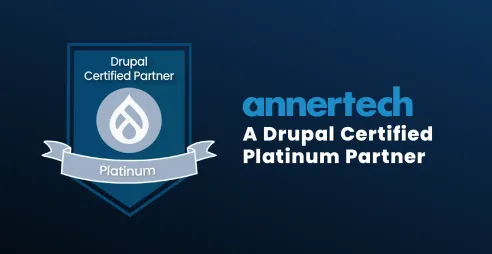Tough at the top (of Google) - Content Strategy, SEO, and Low Bounce Rates

Article content
Annertech is #1 on Google for a number of key search phrases and when we're not, we're usually only beaten by the Drupal Ireland page from g.d.o. (groups.drupal.org/ireland). How did we get to the top of Google? How do we stay there? Two words: hard work - but it really revolves around two other words: content strategy. Let's get down to the details.
We used to think we didn't have a content strategy, but we did. It went like this: we blog when we think of it; we tweet when we are at an event; we send out a newsletter every now and then; we have a Facebook page with 4 likes and no posts. It doesn't sound like a winning strategy, and it's not. So, lesson one: not having a content strategy is itself a content strategy (albeit a very poor one). Were we at the top of Google then? As it happens, we often were. The reason being that we are Ireland's longest established Drupal web design agency, very well known in Ireland and Europe for our Drupal services, and no body else in the Drupal community in Ireland was doing much in the way of planned content strategy.
What changed
We made two drastic changes:
- We redesigned our website and built it in Drupal 8 (it remains the only Drupal 8 website in Ireland), and
- We used the redesign as an opportunity to evaluate and re-write our content and also formalise a strategy for it.
Developing our content strategy
Last October, the content team met for a full day's discussion about the state of our content offerings, asking ourselves such questions as:
- What do we consider content?
- Is social media (tweets, statuses, etc) considered content?
- Is an image attached to a blog post content?
- Where is all our content collected, itemised, and systematised?
- Who looks after it?
- What are our analytics telling us - visitors, sessions, bounce rates, etc?
- What are our short term, medium term, and long term aims for content?
Once we had answered all of these (and many, many more), we set about formulating a plan for our content: what are we going to publish, when are we going to publish it, who has authority to create content on the website, who has authority to publish that content, what's our social media plan, etc. I won't go into our full strategy for fear of losing the family jewels, but I will give a flavour of our blogging strategy. We decided to publish one blog post per week, on a Monday morning at 10:30 in an effort to aim for consistency. All blog posts must:
- have a link to an internal page on our website (often a call to action towards one of our services pages)
- have a link to an external website (such as to a Drupal module that we mention in the post)
- have an image (we create these ourselves to make sure they are relevant to the post and to avoid the garishness of stock photography)
- have a call to action
- fulfill at least one Annertech content aim
- be verified by an Annertech content team lead member
- deal with one topic
- have all metadata fields completed
- have SEO-rich titles or else be very attention-grabbing
- etc
What does success look like?
Before engaging in this process, we were quite ad hoc about content creation, maintenance, and governance. Though we were number one on Google for a number of terms, our search engine ranking was slipping. The number of hits on our website was quite low (who wants to read about web design services in Ireland?).
Here's a snippet from a Google Analytics report from this time last year:

And here's the same snippet from this year, which certainly looks healthier:

Though the second image looks healthier on face value, it's very hard to tell without some context. So here's both reports compared against each other - as you can see, our website's least busy days these days is way more busy than our busiest days a year ago.

Finally, here's a snippet from the same report in Google Analytics displayed over a full year. Can you see where we started getting as serious about our own content strategy as we are about our clients' content strategy? That's right, October 2014.

The spikes in this graph roughly correspond to the days when we publish a blog post. Some get more hits than others naturally, but without fail, each day we publish a blog post (once a week) we get a lot more hits on our website than the days we don't. We'd like to have the spikes not so spikey, but don't have the resources to publish a blog post every day just yet.
Getting these kinds of hits on our website also meant a much increased social media following and reach and better search engine rankings for some other key words - not exactly number one on Google, but faring better than we had been and on our way to the top. With these benefits, some of our medium term content strategy goals were met within the short term timeframe and some of our long term goals within our medium term timeframe.
Bounce Rate
What we most liked about this was the reduction in our bounce rate (the percentage of people who leave your website after looking at only one page). Before we began this process we had a bounce rate of about 27%, which is quite good for our industry. It meant that 73 out of every hundred visitors clicked on at least one more page on our website. It's now down to a little under 3% - so about 97% of our site visitors read at least two pages of our website.
What was our plan for decreasing our bounce rate? Let's just say, we're trying to COPE and we'll go into more detail in a future blog post. Stay tuned.
I'm going to wrap up this article here by reinforcing an earlier thought: not having a content strategy is itself a content strategy.
If you'd like to talk to me or another Annertechie about your content strategy, feel free to email us at hello@annertech.com or give us a call on +353 (0)1 524 0312. We don't bite!


